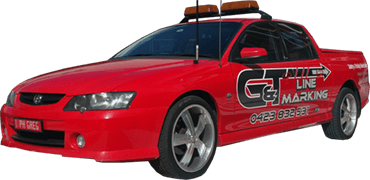Latest articles
Understanding the materials used in road line marking in Brisbane
6:00am, Monday 30 October 2017
Most of us take line marking in Brisbane for granted, instantly recognising them and acting accordingly. Few of us however, actually understand the materials that are involved in making these lines, not realising that it takes skill to know what materials to use and the best way to use them.
We often see line marking services in progress on our roads, maligning the fact that we are stuck in one lane, while the other lane is being repainted. So next time you are waiting in traffic watching the lines being painted on the other side of the road, why not spend your time productively trying to figure out which of the three materials outlined below, are being used by the road marking services.
Latex paint: This is the least durable paint used for line marking in Brisbane and is similar to the latex paint that is used for the exteriors of building. It does contain a polymer resin however, usually a combination of acrylic and water, and as the water evaporates in the sun, the paint dries on the road.
Plural component materials: These start out as a polymer resin and a catalyst, and there are two different types of combinations used for line marking in Brisbane. The first uses an epoxy and an amine, which are heated to between 40 and 60 degrees centigrade, mixed and then sprayed on the road. Once mixed, this type of material dries and hardens within 15 to 30 minutes. A second type of plural component used by line marking services consists of an amine resin and an isocyanate catalyst, which dries within 2 to 3 minutes. The problem with this latter material is that it really needs to be painted onto a new, clean surface, so it isn’t always appropriate.
Thermoplastics: These are based on modified esters and must be heated to around 200 degrees centigrade, solidifying immediately on the road surface. These are the best for line marking busy areas as they don’t hold up the traffic while the material dries. Thermoplastics can also be used for hazard lane markings, crossings and turning lanes.
None of these line markings will reflect back towards the driver, not until small glass spheres of silicon glass are dusted onto the markings, before they dry. These are usually mixed in with the thermoplastic materials however, rather than dusted on, so if you see the road marking services dusting their lines, you know that they are unlikely to have used thermoplastic material.
For professional line marking in Brisbane, call G & T Line marking on 07 5549 6733 or complete our online enquiry form.


